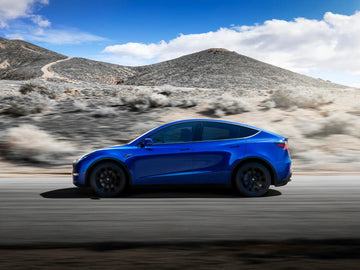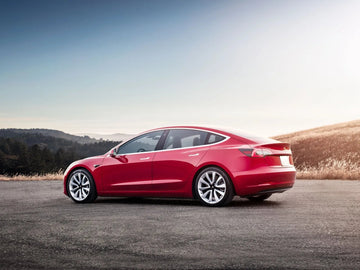At present, for pure electric vehicles, in addition to the continuous improvement of safety issues, the biggest problem is the life of its core power battery. In response to this problem, more car companies currently use the batteries of suppliers, and at the same time introduce some policies such as battery replacement; while for other companies, they are also constantly developing batteries, such as BYD and Tesla. It is an indisputable fact that Tesla has also been working on battery research and development.
In September 2020, Musk released a new battery product, the 4680 battery, that is enough to subvert the power of electric vehicles on "Tesla Battery Day"! The 4680 battery has obvious advantages. Compared with the 2170 battery, it increases the battery life by 54%, reduces the cost by 56%, and reduces the investment in equipment per unit of production capacity by 69%. If the 4680 battery can be mass-produced, it will become Tesla's enemy. weapon.
Tesla has always been submissive in battery research and development
More than that, Tesla has always been submissive in battery research and development. On April 23 of the same year, International Intellectual Property announced that Tesla submitted the nickel-cobalt-aluminum (NCA) electrode developed for its "million-mile" battery. The patent application, according to the description in Tesla's patent documents, uses this electrode battery, the battery life is expected to exceed 1 million miles (1.609 million kilometers) and the price is cheaper!

Recently, the Tesla team announced the conclusion of a paper beyond everyone's imagination: a new battery design that can make the battery life possibly exceed 100 years. Although what we can know at present is the expression of words, the paper was published in SCI journals, and the influence can be imagined. That means, maybe Tesla's battery life will exceed the car's life in the future? Tesla's cars no longer have to worry about batteries?

The design of the battery is mainly based on nickel cobalt lithium manganese oxide as the positive electrode (NMC 532) can work at a lower voltage of 3.8V, while compatible with lithium bisfluorosulfonimide (LiFSI) salt electrolyte NMC 532 battery can be Avoid high pressure corrosion problems. The paper also uses a set of data to show the lifespan of the battery. Specifically, if the temperature is controlled at 25 degrees Celsius, the NMC 532 battery does not show significant loss after nearly 2,000 charge-discharge cycles, then the NMC 532 battery may have more than 2,000 charge-discharge cycles. 100 years of service life.
Not only that, NMC 532 also has special energy density, 495 watt-hours per liter, which is higher than that of many current batteries, which means that the battery can reduce the space occupied by the car again, so that the car equipped with this battery has more Design reverie.
Dahn's research in the field of ion batteries
Dahn is a recognized outstanding scientist in the field of lithium-ion batteries, which he has been working on since its inception. His research focuses on improving the energy density and lifetime of lithium-ion batteries, as well as reducing their cost.
In March of this year, Dahn mentioned a battery with a life of 4 million miles (about 6.43 million kilometers) in a speech. Market reviews say that if Dahn's invention comes true, the NMC 532 will be another leap forward in battery technology. But the analysis also highlights that, given the average lifespan of a U.S. car is only 12 years, a car may not be able to use a battery with a lifespan of more than 100 years. And due to the increasing scarcity of cobalt resources, the price of nickel-cobalt-manganate lithium batteries may be relatively expensive, making it difficult for consumers to afford. However, there is an argument that the technology could support static energy storage. The U.S. government recently announced a number of new policies to promote clean energy development. NMC 532 can be used as an energy storage battery for family homes and increase the stability of local renewable energy grids.
It is understood that the cooperation between Dalhousie University, where Dahn teaches, and Tesla began on June 8, 2016. His laboratory team has contributed a considerable number of battery patents and papers to Tesla. Last year In January, Tesla and the lab renewed a five-year industrial research partnership agreement. If this battery technology can really achieve breakthroughs like research, then the promotion of electric vehicles is bound to bring great benefits.
For the new energy vehicle market, battery technology is an urgent problem to be solved
In fact, the progress of battery technology is what everyone wants to see now, so the publication of this paper has attracted a lot of attention. Many netizens said that pure electric vehicles may really see hope. But we also noticed a problem, the battery life is more than 100 years, but the car life is actually less than 100 years, so when the battery is recycled, or how to deal with it? There's also the question, if the battery actually makes it into a car, will it be more expensive, maybe just a battery technology that a small group of people can enjoy? Therefore, it has also been suggested that the battery may be more suitable for other aspects.

For the new energy vehicle market, battery technology is indeed an urgent problem to be solved, but it cannot be concluded in a short time. What is needed is that relevant companies continue to work on it and accumulate deposits. At the same time, we must also have a clear understanding, theory is not practice, and any remarks cannot be summed up in one word. Of course, it is also expected that the new energy market can completely solve the battery problem in the future.




















































